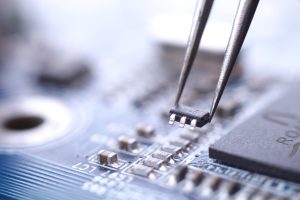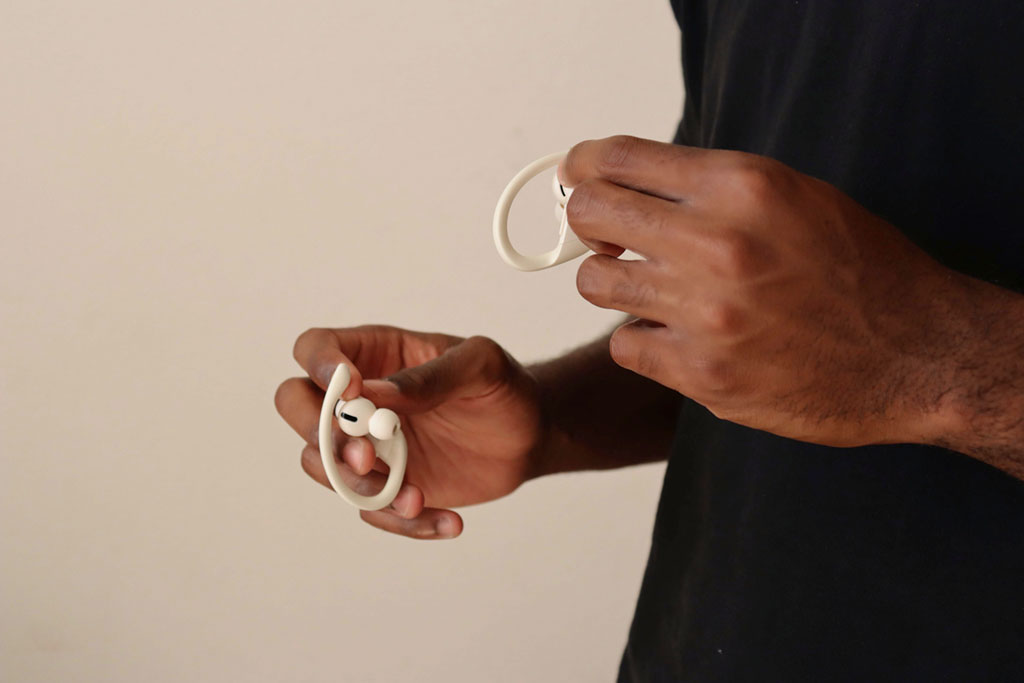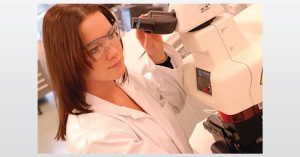
Microscopy Techniques in the Failure Analysis of Optoelectronics
EAG divides FA tasks into three levels. In each level, we employ optimal techniques for device characterization, defect localization, and root cause failure analysis.
Home » Cracking of Molded Components
Used for everything from electronics to basic personal care items, injection molded plastic components are an essential part of most of today’s consumer products. These parts help create durable, cost-effective goods to meet consumer demand.
An injection molded component in a consumer product was found to have an increased failure rate over a three-month period. The part contained a polyolefin copolymer and an inorganic filler.
Comparisons were made between failed and control parts. Based on NMR spectroscopy, it was found that the failed sample had a different relative ratio of monomers compared to the control sample.

In addition, based on EDS elemental analysis of ash from loss on ignition testing, the inorganic filler material was found to contain different elements.

These compositional differences were traced back to out-of-specification resins and issues with the raw material supply chain.
For more than 50 years, scientists and engineers at Eurofins EAG have investigated and resolved product failures for clients. Our team of experts identify key failure indicators and follow them to the root cause.
Failure analysis of plastics, thermosets, and rubber materials is commonly performed on finished products and typically involve comparative analysis between failed and non-failed samples. Once the potential root cause is identified, experiments can be designed and conducted to test the hypothesis and recreate the failure in the laboratory. Eurofins EAG can evaluate a variety of polymer types, including:
Eurofins EAG Laboratories offers a full suite of analytical techniques to evaluate the identity, composition, morphology, topography, and rheology of polymeric materials and components.
Call +1 800-366-3867 or email us.

EAG divides FA tasks into three levels. In each level, we employ optimal techniques for device characterization, defect localization, and root cause failure analysis.
Contamination control and defect reduction are critical issues in the manufacturing process of compound semiconductor devices which can impact the performance of the end product. We can provide valuable insights to identify contaminants and characterize materials throughout the product lifecycle.

In the full webinar we answer pre-submitted questions from our audience about Secondary Ion Mass Spectrometry

In this webinar we introduce EAG Analytical Capabilities in Europe at our Eindhoven and Toulouse Laboratories
To enable certain features and improve your experience with us, this site stores cookies on your computer. Please click Continue to provide your authorization and permanently remove this message.
To find out more, please see our privacy policy.